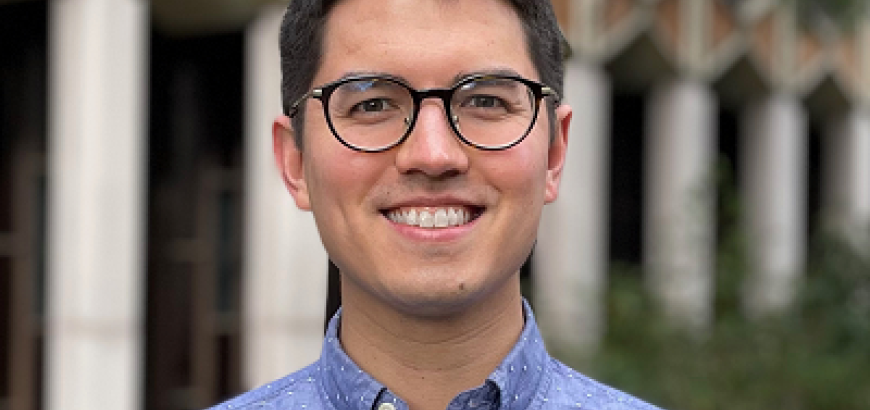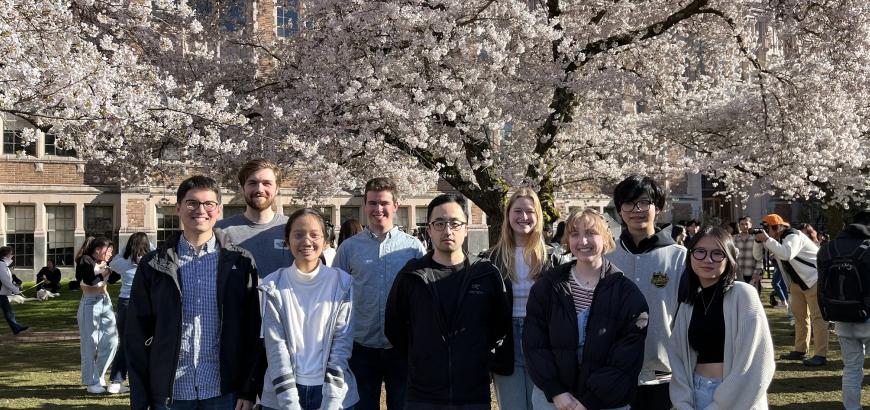Dr. Reed joined us in July 2022; we’re pleased to acquaint you with him and his research
Doug Reed grew up in Horseheads, NY. Throughout his scientific career, he has focused on using novel atomic and molecular interactions to make materials with new functions. He also enjoys connecting with many types of scientists through large collaborative projects. He attended college at Harvard University, where he was introduced to synthetic inorganic chemistry in the lab of Prof. Ted Betley. There, he synthesized multi-iron clusters supported by organic molecules with several iron-anchoring sites that allowed the metal atoms to function as one collective unit.
Doug then pursued his graduate studies in the lab of Prof. Jeff Long at the University of California, Berkeley. At Berkeley, he turned to materials chemistry, synthesizing solids with metal atoms supported by organic bridging groups. These materials, termed metal–organic frameworks (MOFs), are infinite, crystalline lattices and feature molecular-scale porosity. MOFs capture large volumes of gas very quickly, and if gas binding were selective for a particular molecule, gas separations can be performed with much greater efficiencies than traditional technologies that currently use 15% of all energy consumed today. Doug’s work specifically involved using metal centers that undergo collective magnetic and structural responses to particular gas molecules. This responsiveness allows for very efficient gas uptake and release while making the material extremely selective for one gas in industrially relevant mixtures. In addition to papers he published in these areas, Doug holds two patents.
Doug then went to Columbia University as a postdoctoral fellow in the labs of Prof. Colin Nuckolls and Prof. Xavier Roy. By synthesizing clusters containing metals and chalcogenides, individual molecules could be soldered between two metal surfaces using organic molecules. This created a single-molecule junction, useful for probing fundamental molecular properties and potentially for nanoscale electronics. These particular cluster-based junctions show very different conductive behaviors than standard molecular junctions, as the interactions between metals and organic groups require the electrons to flow one at a time through the circuit. These individual electrons can then be manipulated, allowing these single-cluster junctions to become new quantum devices.
Doug started his independent group at University of Washington in July 2022, where his group currently has 3 graduate students and 5 undergraduate researchers. Building off his previous background, his new research group studies inorganic and organic materials chemistry. Motivated by some of the most pressing problems impacting the planet today, the Reed lab synthesizes and characterizes new materials that could be used in applications related to clean energy generation and storage, sustainable electronic devices, or removing greenhouse gases and poisonous contaminants from the environment.
To address these concerns, the Reed lab is looking to make new materials by reimagining how porous materials are constructed. Specifically, the research focuses on microporous materials – sponge-like materials where the holes are the size of a few molecules and the walls are mere atoms thick. These materials have very high surface areas and many degrees of modularity. However, these materials are also generally very rigid, difficult to heal or recycle, and made of electrically insulating walls, making them ineffective for some of these applications. Whereas traditional porous materials are built from molecular precursors held together by only rigid bonds, the new directions being explored in the Reed lab involve using non-covalent interactions as a way to make porous materials. This allows materials to be dynamic and self-healing. They also could allow for new molecular building blocks, ones that can allow these materials to be highly conductive or magnetically active. Finally, they also might allow for emergent properties never before seen in a porous material.
A major reason for choosing the University of Washington was the commitment to collaboration. His research at UC Berkeley and Columbia were both highly interdisciplinary, utilizing expertise from several research groups at many institutions. Before he began as an assistant professor, Doug spent a year at UW as a research scientist in the lab of Prof. Daniel Gamelin. This allowed him to personally see the highly collaborative nature of the research at UW dedicated to understanding complex properties in new materials. Centers such as the Molecular Engineering Materials Center (MEM-C) and the Center for Integration of Modern Optoelectronic Materials on Demand (IMOD) allow researchers to work together to tackle important problems. Additionally, the Clean Energy Institute and the Molecular Engineering & Sciences Institute show the value UW and the state of Washington place on interdisciplinary work that is the future of groundbreaking scientific research. This is coupled with the vast resources UW has for studying materials chemistry, such as the Research Training Testbeds, the Molecular Analysis Facility, and the Photonics Research Center, all which Doug’s group has used frequently to conduct research.
In his first year, Doug has enjoyed setting up his lab and interacting with his first students. Mentoring has been particularly enjoyable, given how creative and thoughtful his initial students have been. As a group, they have already discovered so many exciting new research directions to explore. He has enjoyed teaching inorganic chemistry as well, teaching CHEM 416/516 “Transition Metals” in autumn quarter and CHEM 317 “Inorganic Chemistry Laboratory” in spring quarter. Finally, he has really enjoyed the ability to collaborate and meet scientists all over the world, hosting several visiting speakers at UW and participating as a Scialog Fellow for Negative Emissions Science.
Outside of research, Doug has backpacked over 1000 miles all over the western US, and enjoys running, cooking, and live music. The combination of mountains, the Puget Sound, and evergreen trees make Seattle the prettiest place he’s ever lived.


